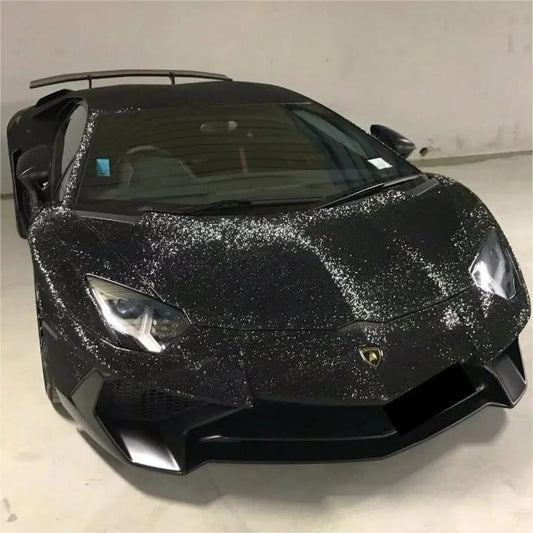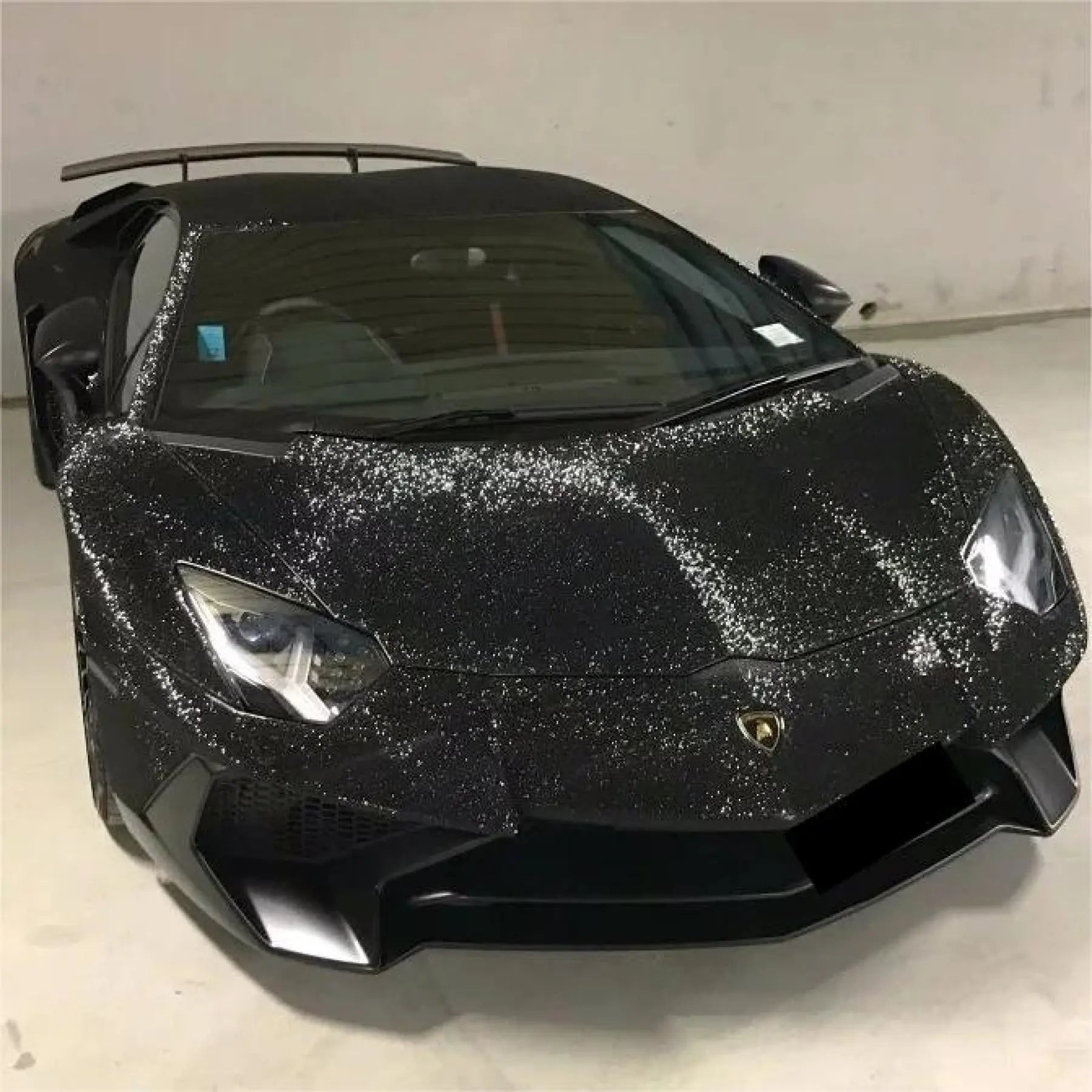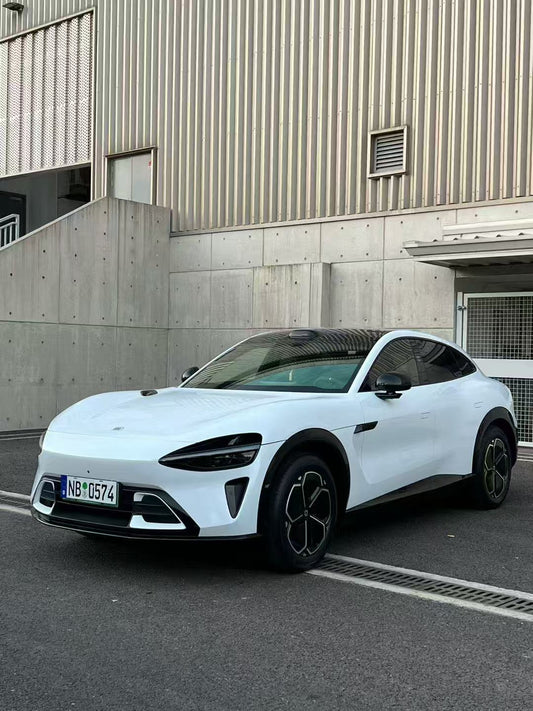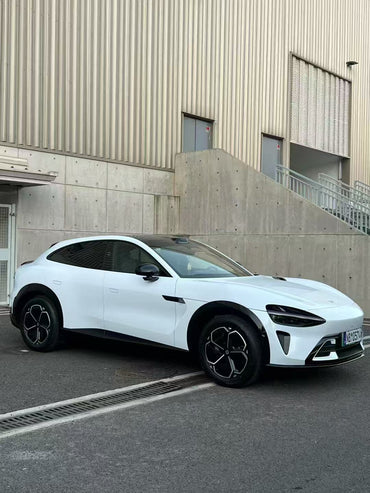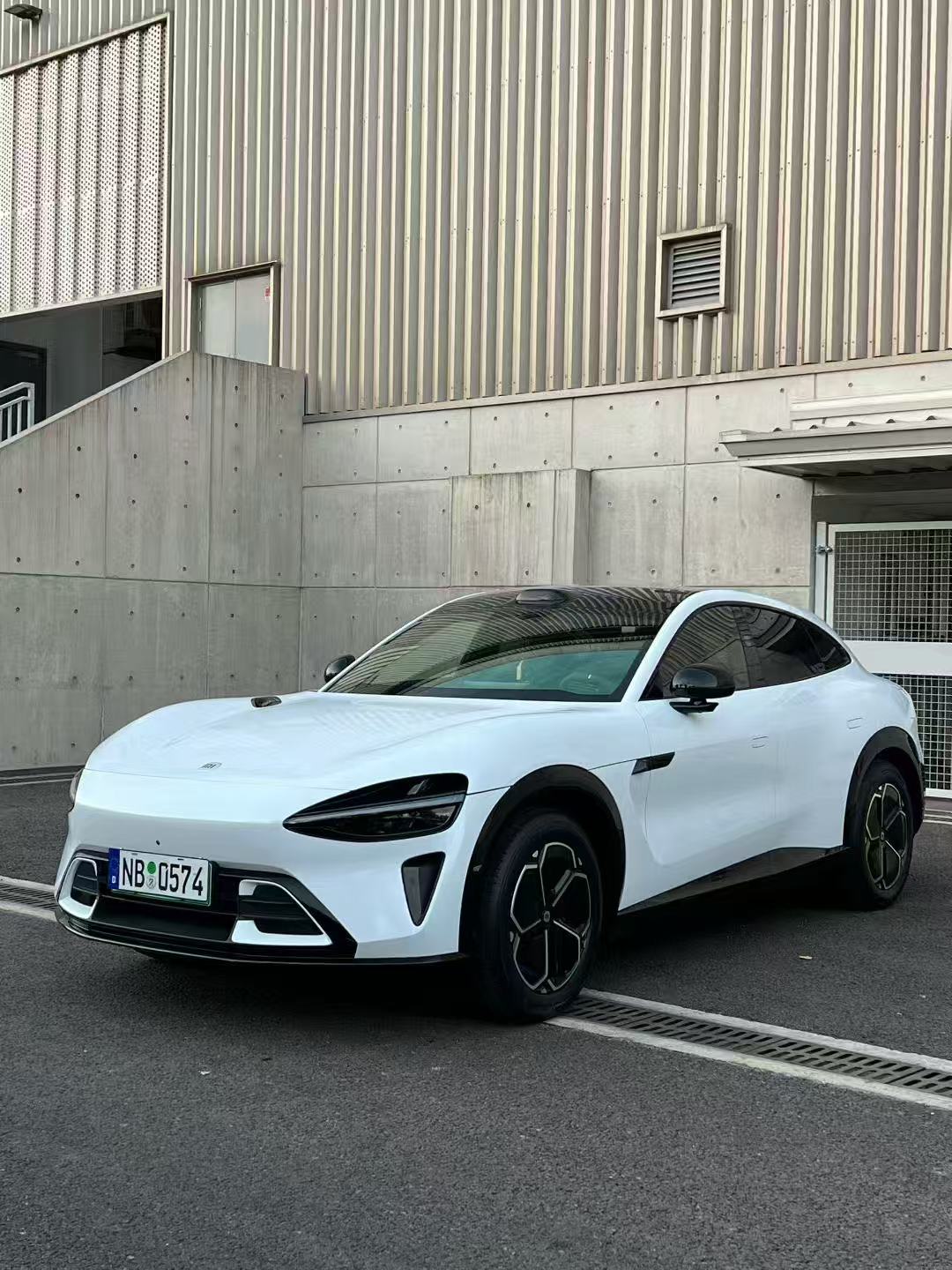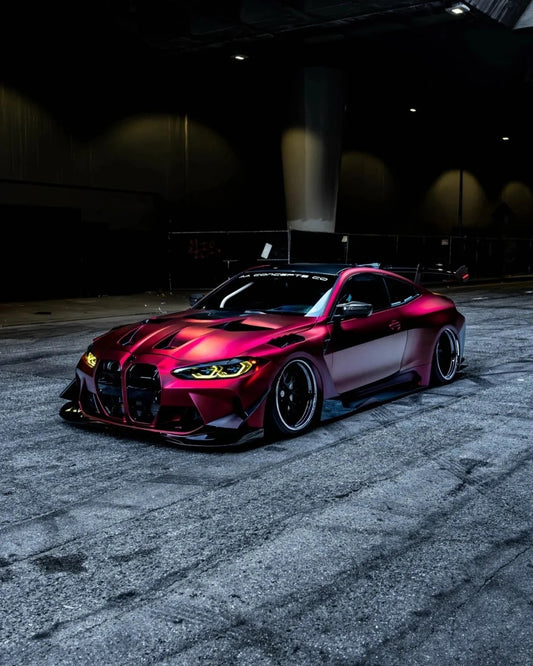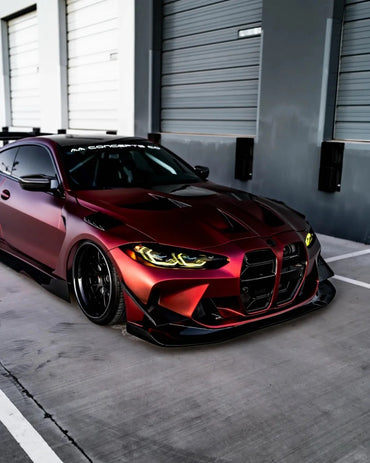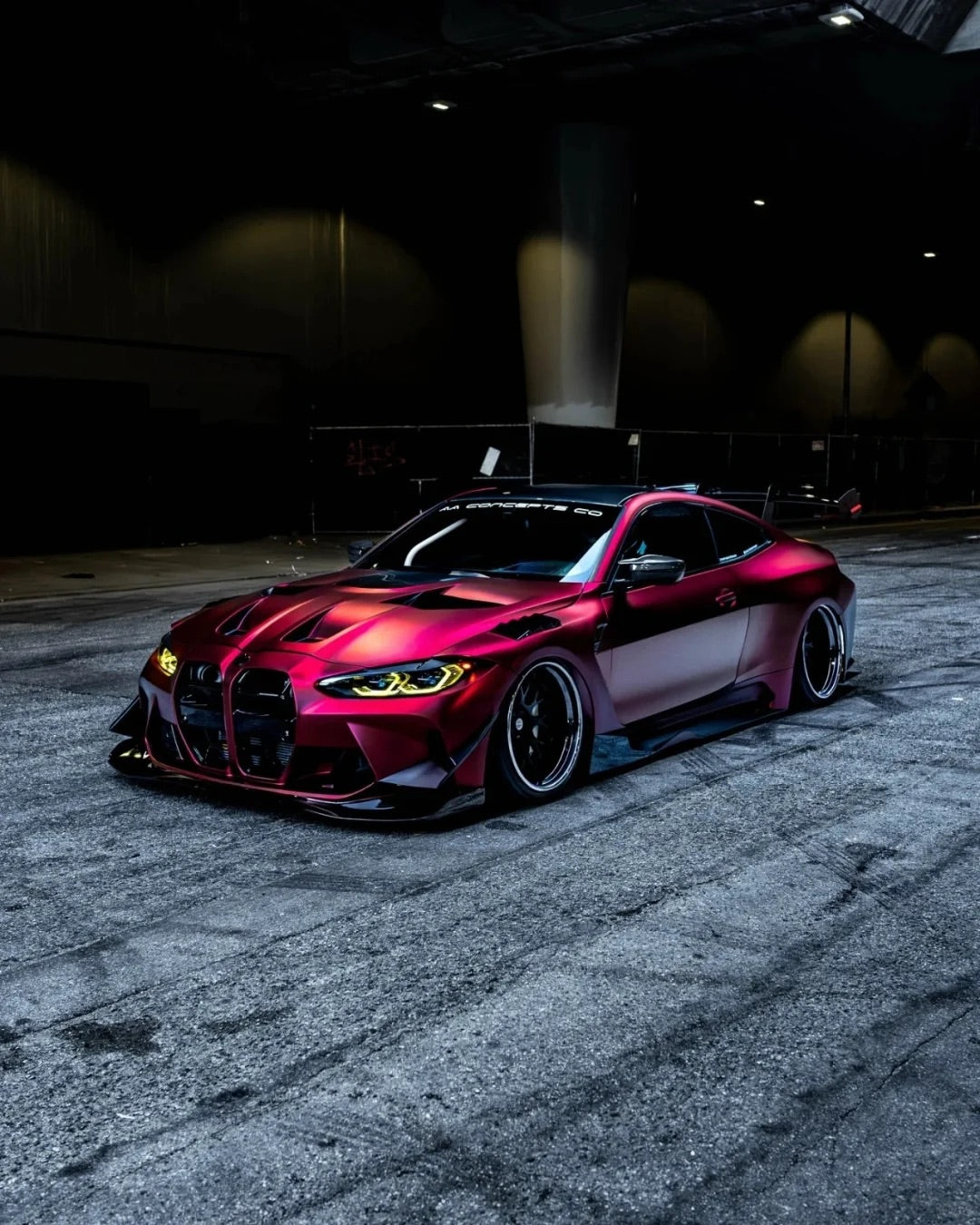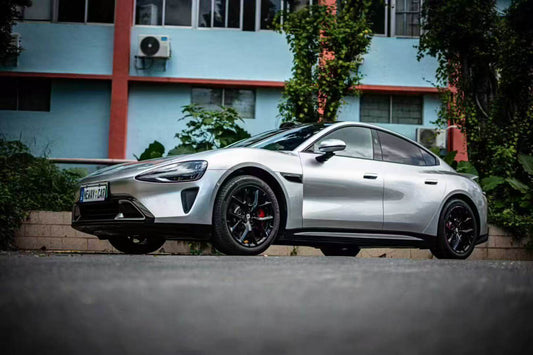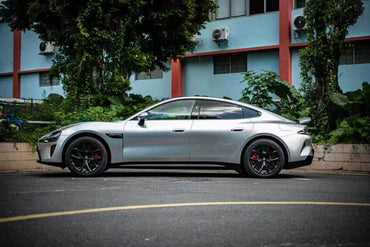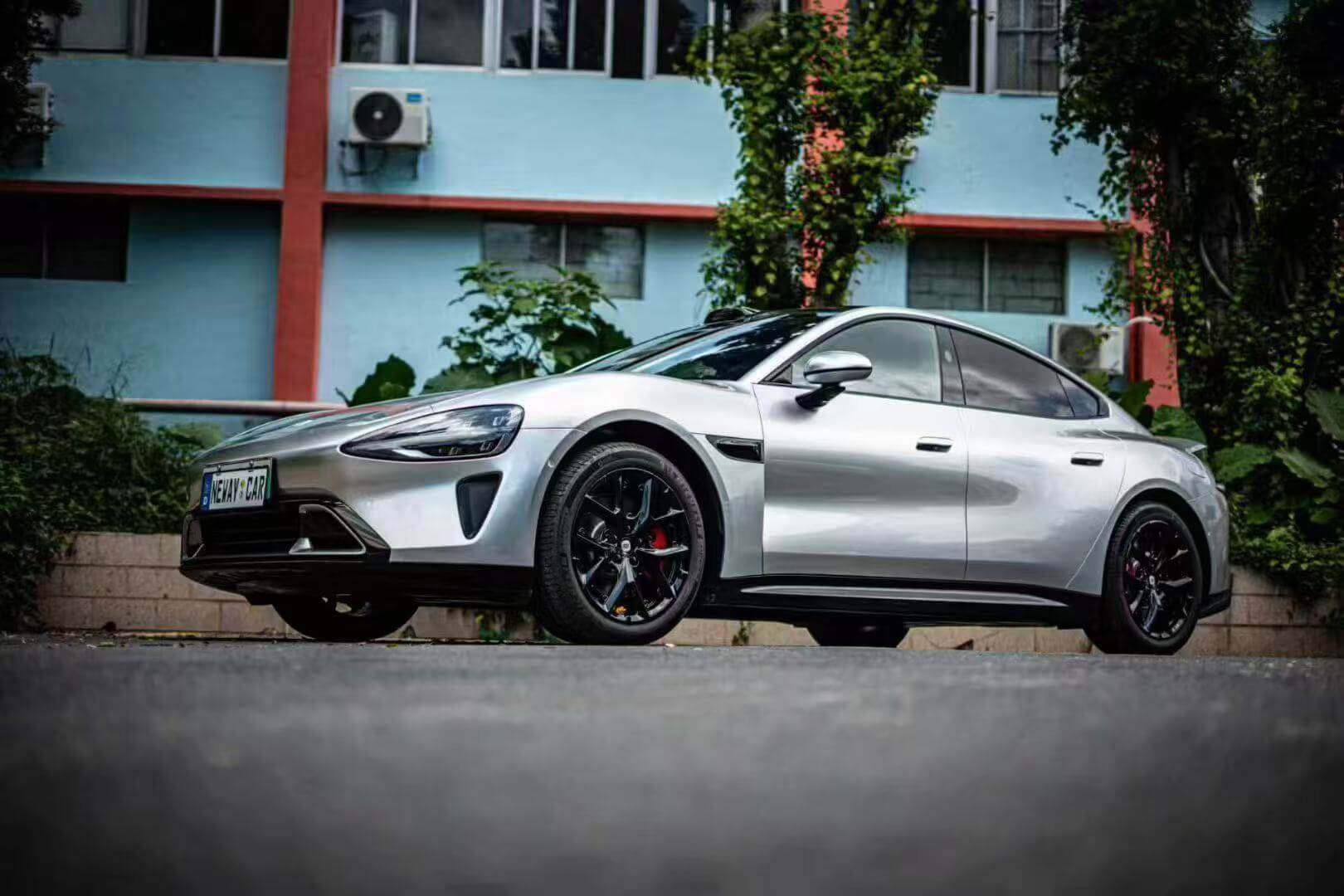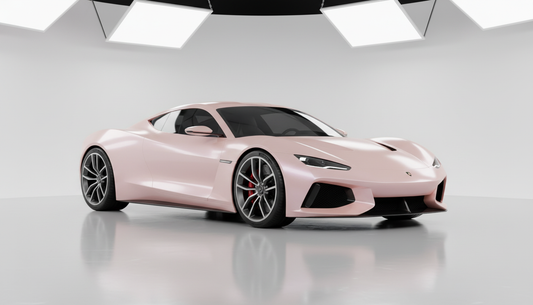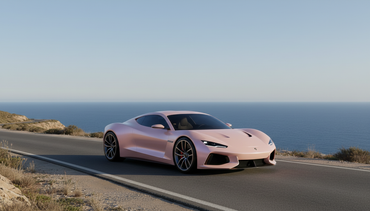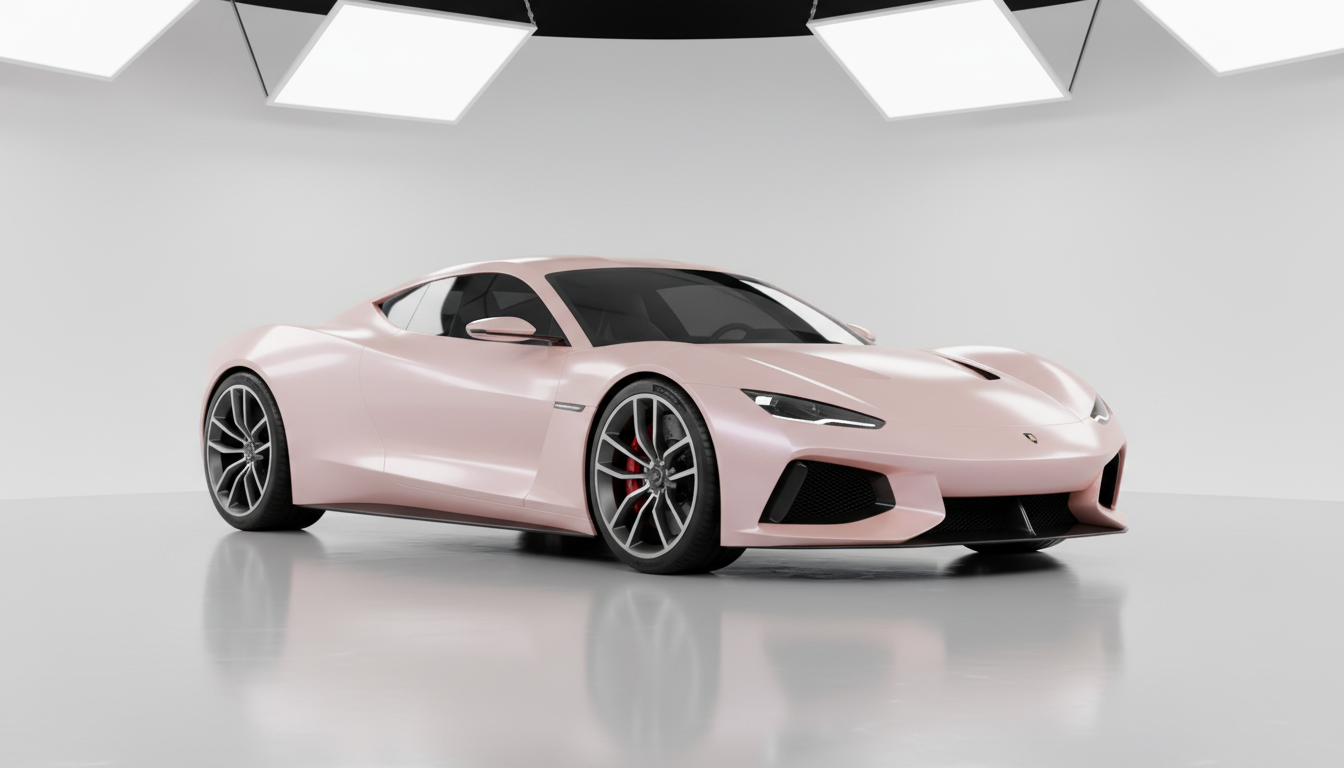The Science Behind Complex Curve Wrapping
Understanding Vinyl Behavior on Curves
Modern vehicle design incorporates increasingly complex curves, compound corners, and intricate contours that challenge even experienced installers. When applying vinyl to curved surfaces, the material must not only take the shape of the surface but also sit properly without bunching or lifting. This requires understanding how different vinyl types respond to heat and tension.
Cast vs. Calendered Vinyl for Curves:
- Cast Vinyl: Light and more flexible, making it easier to manipulate around curved areas and edges
- Calendered Vinyl: Thicker and more rigid, requiring different techniques for complex applications
Our metallic vinyl wraps and crystal vinyl wraps utilize advanced cast technology, providing superior conformability for challenging installations.
Heat Gun Mastery: Temperature Control Techniques
Proper heat control can make or break the finish of your vinyl installation job. Professional installers understand that heat application is both an art and a science, requiring precise temperature management for different materials.
Optimal Temperature Ranges:
- Initial Application: 160-180°F (71-82°C)
- Curve Conforming: 180-200°F (82-93°C)
- Post-Heating: 200-220°F (93-104°C)
If you go below the desired temperature range, the vinyl becomes stiff and does not conform due to limited flexibility and adhesion. However, if you go above the range, you risk the vinyl melting and becoming overstretched and discolored.
Professional Curve Wrapping Techniques
The Cold Pre-Stretch Method
An effective and proven technique is the cold stretch method. This approach shapes the vinyl film around corners without applying any extra heat at the start. This technique ensures uniform temperature distribution and even stretching across the surface.
Step-by-Step Cold Pre-Stretch Process:
- Initial Positioning: Place vinyl over the curved area without heat
- Gentle Stretching: Apply even tension across the material
- Temperature Equalization: Allow film to reach ambient temperature
- Heat Application: Apply controlled heat while maintaining tension
- Final Conforming: Use squeegee techniques to complete adhesion
Advanced Heat and Stretch Techniques
For complex curves like wheel arches, mirror housings, and bumper contours, the pre-stretch and shrink method proves most effective:
Apply heat to the vinyl that you have already cut according to the shape. Hold the film from both ends and stretch it outwards. As you will do so, the film will curve perpendicular to the points of stretch.
Memory Activation Process:
- Heat vinyl to working temperature
- Stretch material beyond installation requirements
- Allow cooling in stretched position
- Apply to curved surface
- Reactivate heat to engage vinyl memory
This technique works exceptionally well with our dual-color dream vinyl wraps, maintaining color integrity through the stretching process.
Squeegee Techniques for Professional Results
Preventing Squeegee Marks and Streaks
Squeegee lines can stem from a variety of factors, but the most common culprits are cheaper vinyl films, rigid squeegees without felt edges, and improper pressure application. Professional installation requires understanding proper squeegee techniques.
Professional Squeegee Application:
- Angle: Maintain 30-45° angle to surface
- Pressure: Firm but not excessive pressure
- Direction: Always work from center outward
- Overlap: Ensure consistent overlapping strokes
- Felt Protection: Use a soft, clean felt-edged squeegee and apply gentle, overlapping strokes
Specialized Tools for Complex Areas
Triangle squeegees are instrumental in applying vinyl to tight and tricky areas, while tucking tools help navigate complex recesses and panel gaps. Our professional wrapping tool kit includes specialized implements designed for these challenging applications.
Material-Specific Techniques
Working with Premium Paint Protection Films
TPU car wraps are known for their superior flexibility, allowing them to conform more easily to the complex curves and contours of a vehicle's body. Our colored paint protection films require specific handling techniques:
TPU Installation Considerations:
- Lower heat requirements than traditional vinyl
- Enhanced conformability reduces installation stress
- Self-healing properties maintain appearance through minor scratches
- Extended 7-10 year lifespan with proper installation
Chrome and Specialty Finishes
Liquid chrome wraps and specialty finishes demand particular attention to prevent distortion:
For Chrome Vinyl, a lower temperature is often recommended to prevent scorching, distortion, or discoloration. These materials require:
- Reduced heat application
- Gentle stretching techniques
- Specialized post-heating procedures
- Enhanced edge sealing methods
Advanced Edge and Corner Techniques
Compound Corner Navigation
Complex corners require systematic approach:
Use a sweeping motion, focusing on the corner and the edge. The heat will make the vinyl more pliable, allowing it to conform to the complex curve.
Professional Corner Wrapping Process:
- Pre-heat: Warm vinyl to increase pliability
- Strategic Cutting: Create relief cuts for complex angles
- Controlled Stretching: Apply tension gradually
- Progressive Heating: Add heat as material conforms
- Edge Sealing: Secure edges with post-heating
Managing Complex Contours
Modern vehicles feature intricate design elements requiring specialized techniques:
- Door Handle Recesses: Use tucking tools and controlled heat
- Character Lines: Employ relief cutting and precise tension
- Compound Curves: Implement sectional wrapping methods
- Deep Recesses: Utilize specialized tucking and heating techniques
Quality Control and Finishing
Post-Installation Heat Activation
After you have applied the wrap, it is important to post-heat the film to activate the adhesive. You must especially apply heat to those parts of the vinyl that were stretched during installation.
Critical Post-Heating Areas:
- All stretched sections
- Edge transitions
- Corner applications
- Complex curve areas
Professional Finishing Standards
Achieving professional results requires attention to detail:
- Edge Trimming: Leave 5-7mm under edges for secure adhesion
- Bubble Elimination: Address all air entrapment
- Adhesion Testing: Verify secure bonding across all surfaces
- Final Inspection: Check for lifting, bubbling, or imperfections
Troubleshooting Common Complex Curve Issues
Addressing Installation Challenges
Wrinkle Management: Use a heat gun on low settings to soften the vinyl, smooth out bubbles with a squeegee from the center outward
Edge Lifting Prevention:
- Proper heat activation
- Adequate trimming margins
- Quality material selection
- Environmental control during installation
Bubble Resolution:
- If you run into bubbles that are too big, tap with the squeegee to split them into many smaller bubbles
- Use pin-pricking for persistent bubbles
- Apply heat and pressure for elimination
Future Trends in Advanced Wrapping
Emerging Technologies
Color-shifting wraps using light-refracting pigments offer "chameleon" films that shift hues in sunlight, representing the cutting edge of wrap technology. These advanced materials require specialized installation techniques and enhanced skill levels.
2025 Technology Trends:
- Self-healing coatings that repel UV rays, bird droppings, and road salt
- Air-release technology with microchannels preventing bubbles during installation
- Enhanced conformability for complex applications
- Improved environmental resistance
Sustainable Installation Practices
The push for greener alternatives is reshaping materials used in car wraps, with eco-friendly adhesives and recyclable films becoming industry standards.
Professional Tips for Advanced Success
Environmental Considerations
Climate control helps to see that the vinyl sticks well to the furniture. Optimal conditions include:
- Temperature: 68-75°F (20-24°C)
- Humidity: Below 50%
- Dust-free environment
- Adequate lighting
Tool Maintenance and Selection
Quality tools make the difference between amateur and professional results:
Invest in a good quality infrared thermometer for temperature monitoring, especially during post-heating
Essential Advanced Tools:
- Digital temperature-controlled heat gun
- Infrared thermometer
- Felt-edged squeegees in multiple sizes
- Precision cutting tools
- Tucking and detail tools
Conclusion
Mastering advanced wrapping techniques for complex curves and contours requires understanding material science, proper tool usage, and systematic application methods. Whether working with our premium ultra-matte wraps or innovative 3D carbon fiber wraps, success depends on combining proper technique with quality materials.
Vinyl wrapping is a creative and practical way to personalize and protect vehicles, but achieving a flawless application requires attention to detail and the right approach. By implementing these advanced techniques and utilizing professional-grade materials from Sailifilm, installers can achieve results that rival factory finishes while providing superior protection and customization options.
For comprehensive wrap installation guidance and premium materials, explore our complete range of sample kits to test techniques with different materials before committing to full installations.
External Resources:


